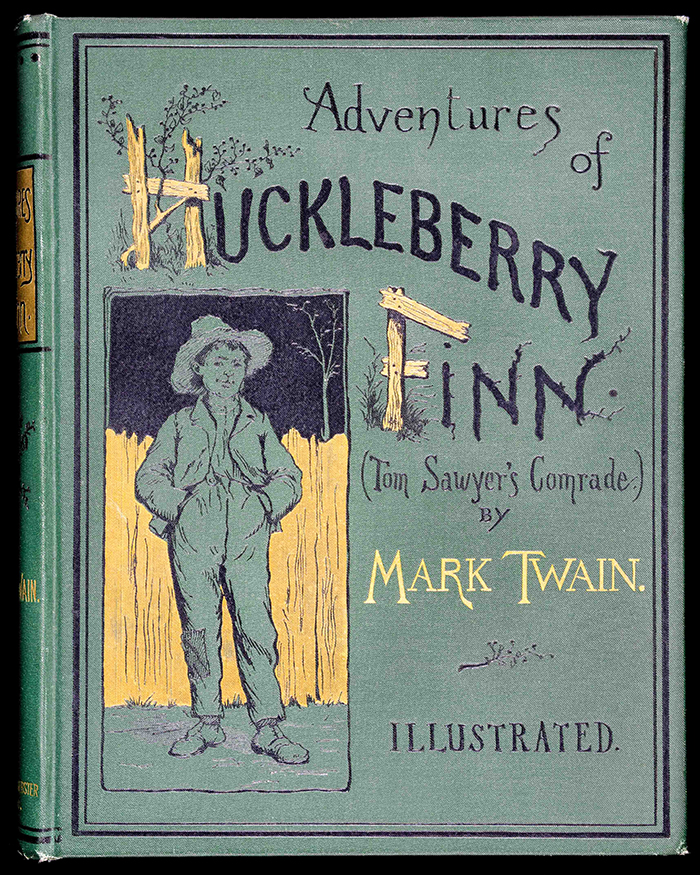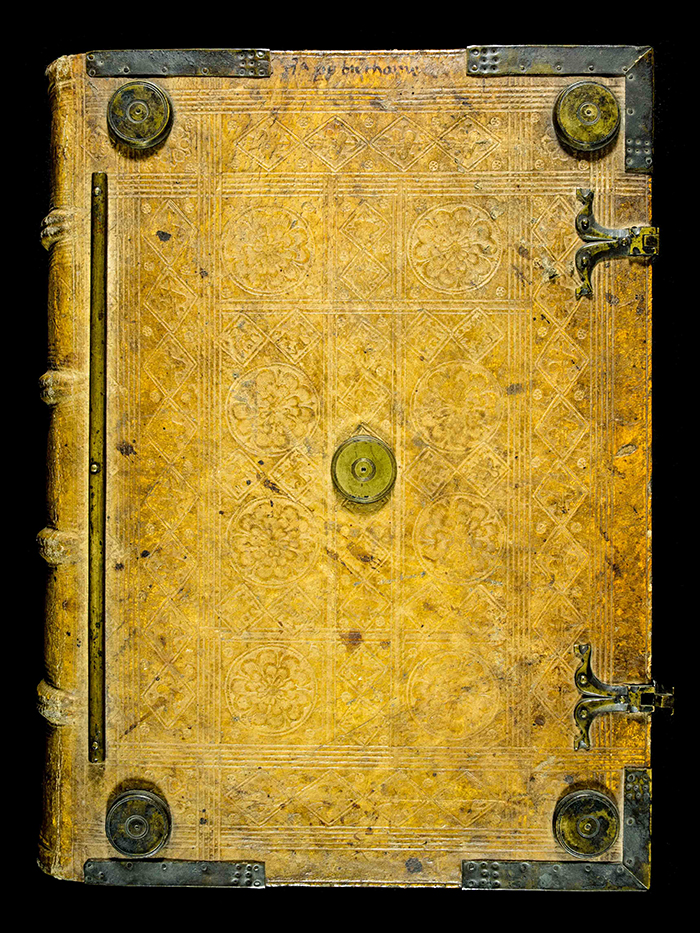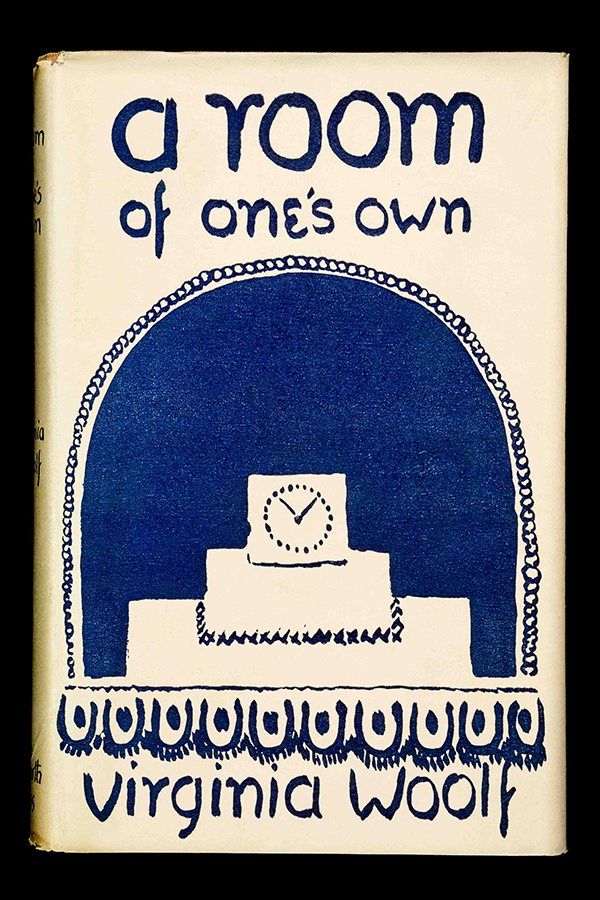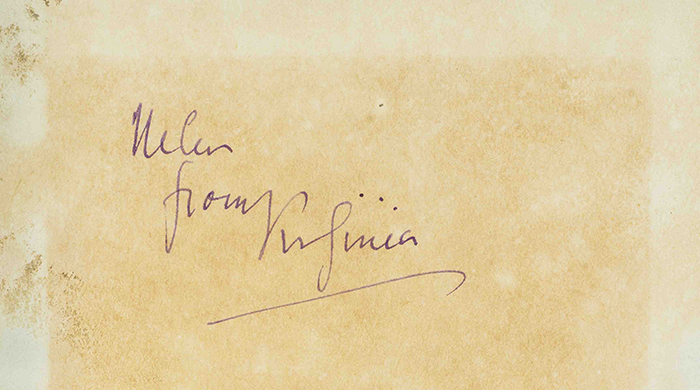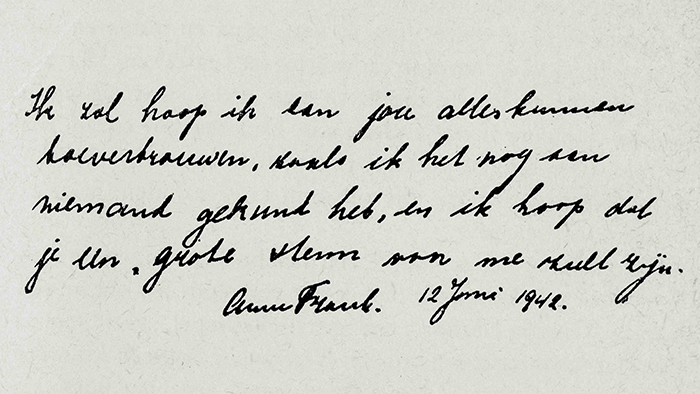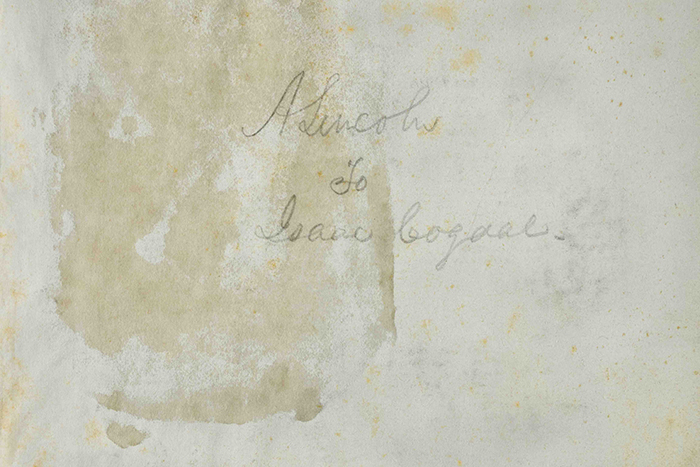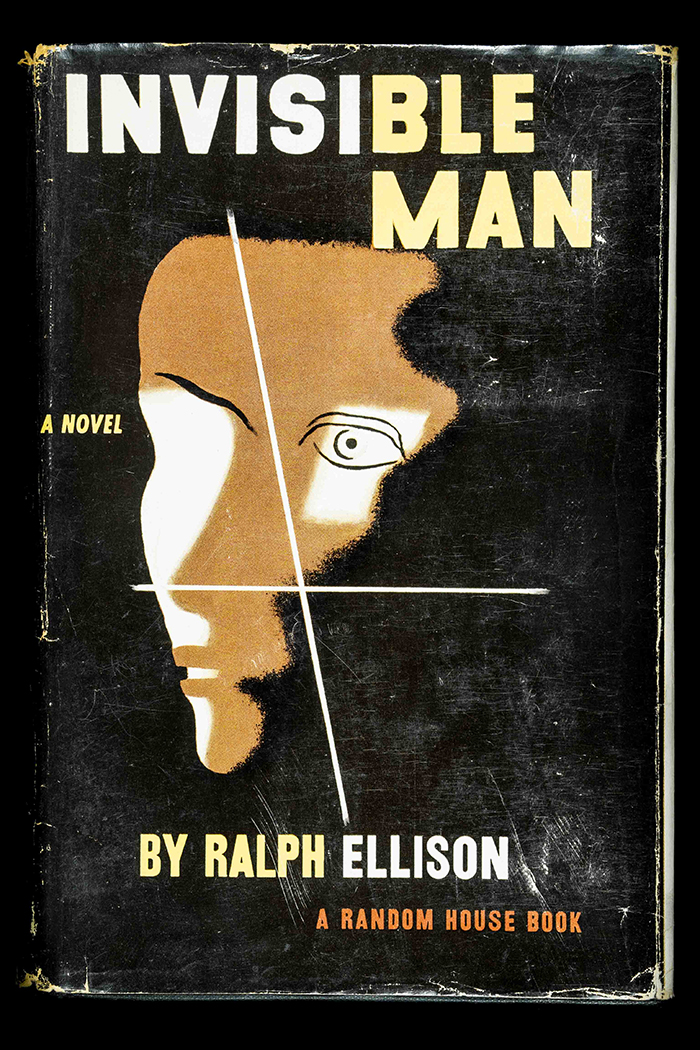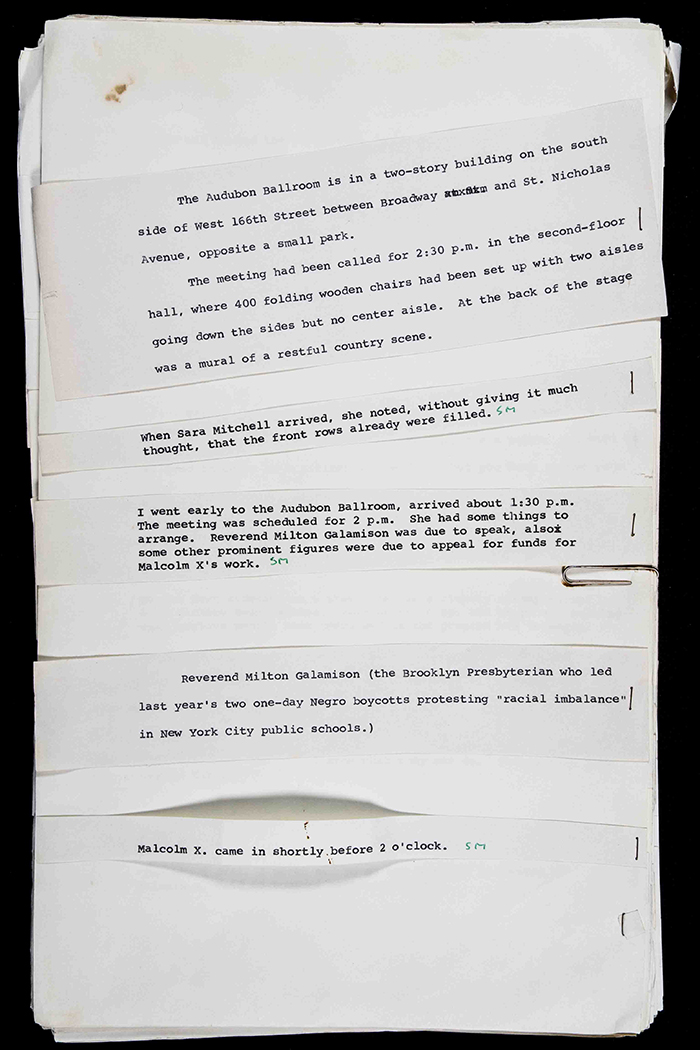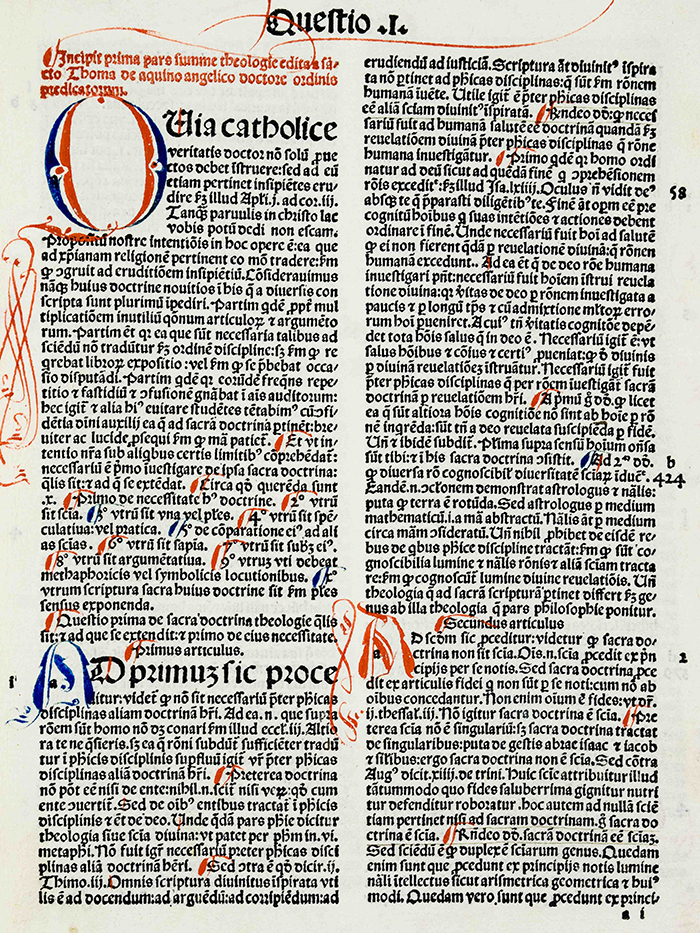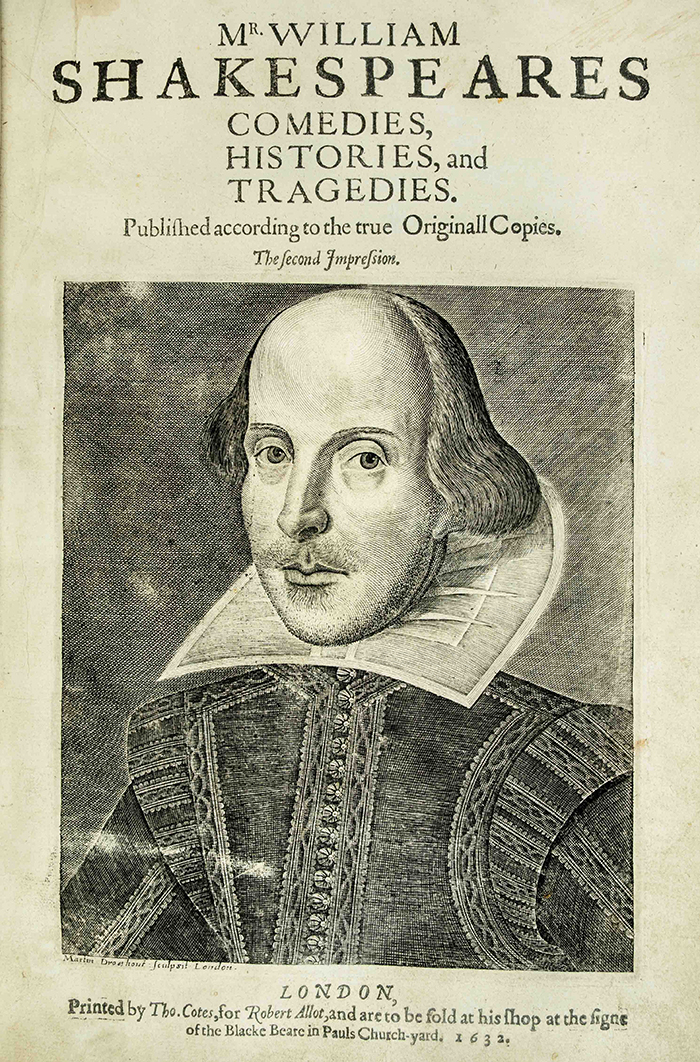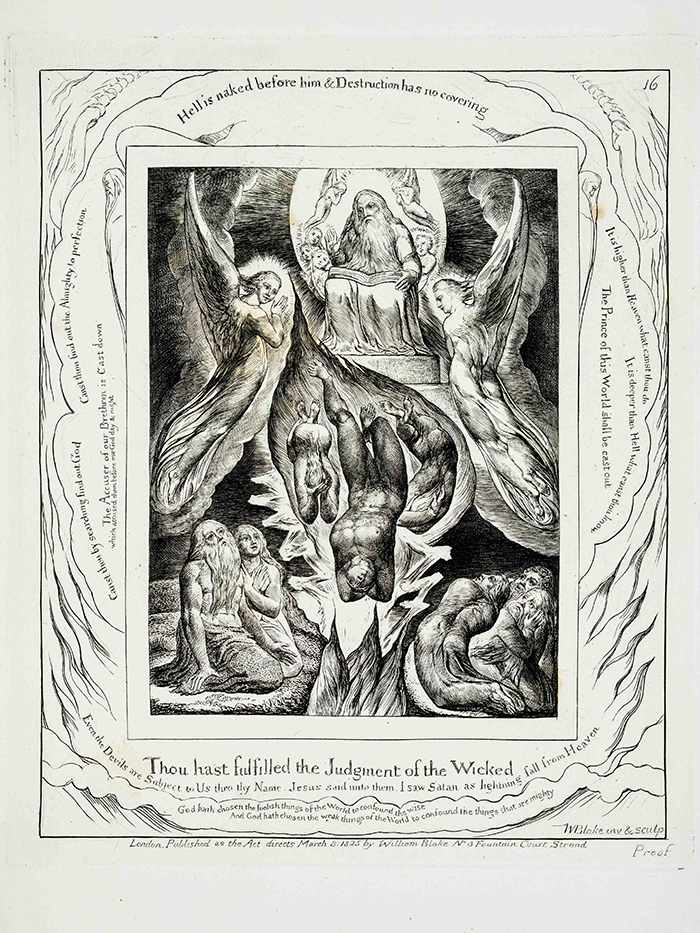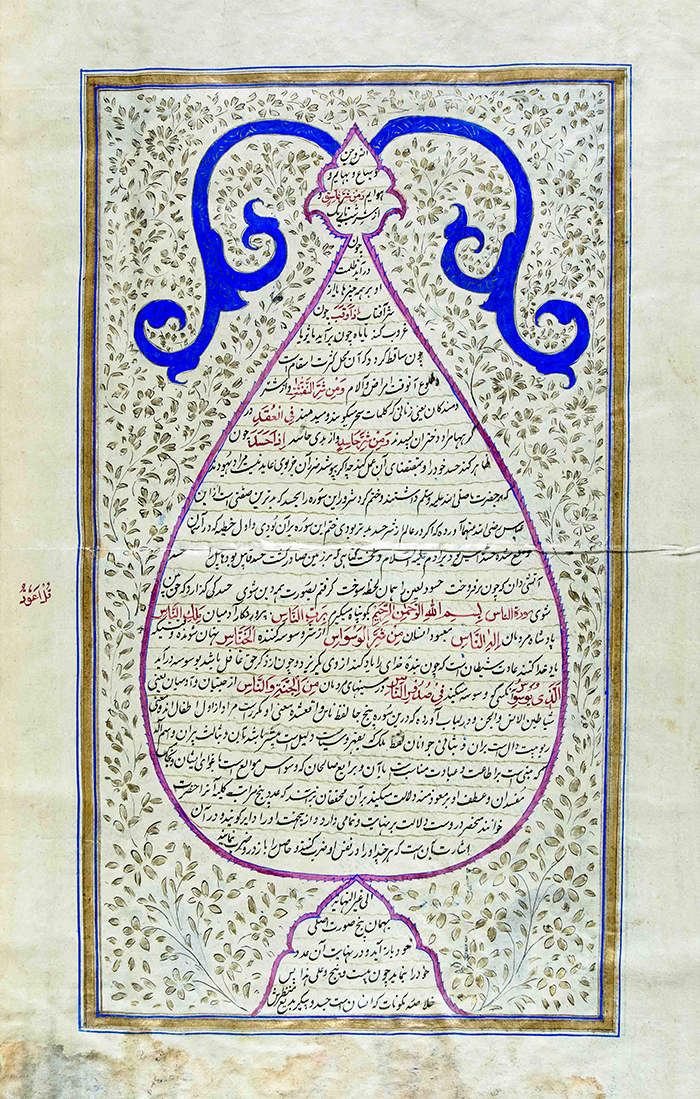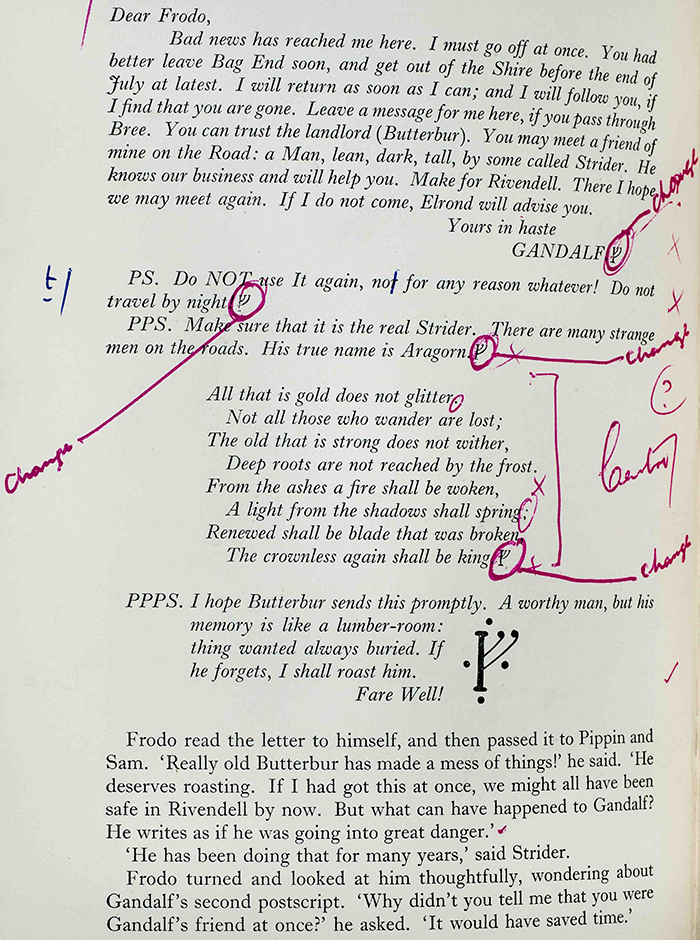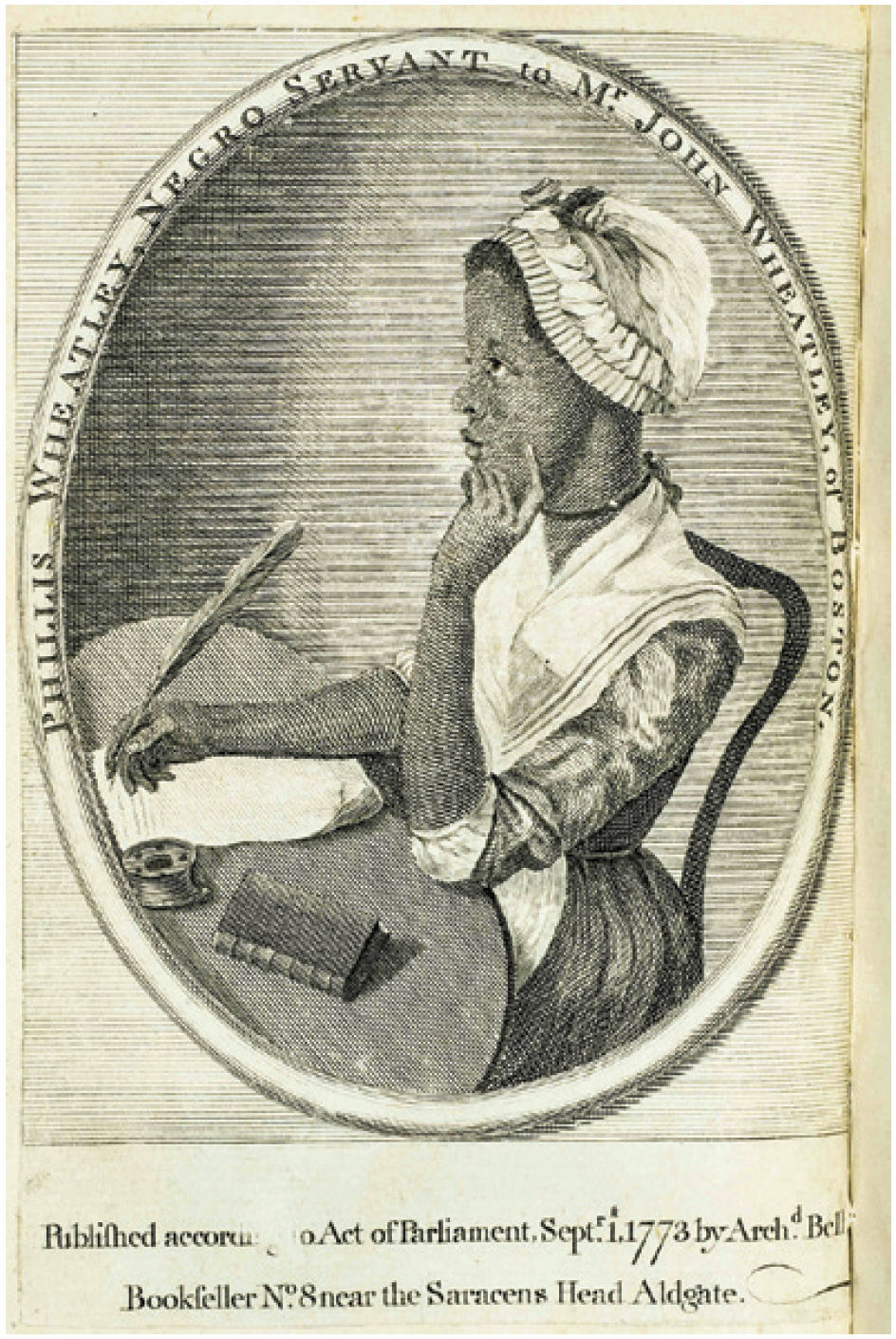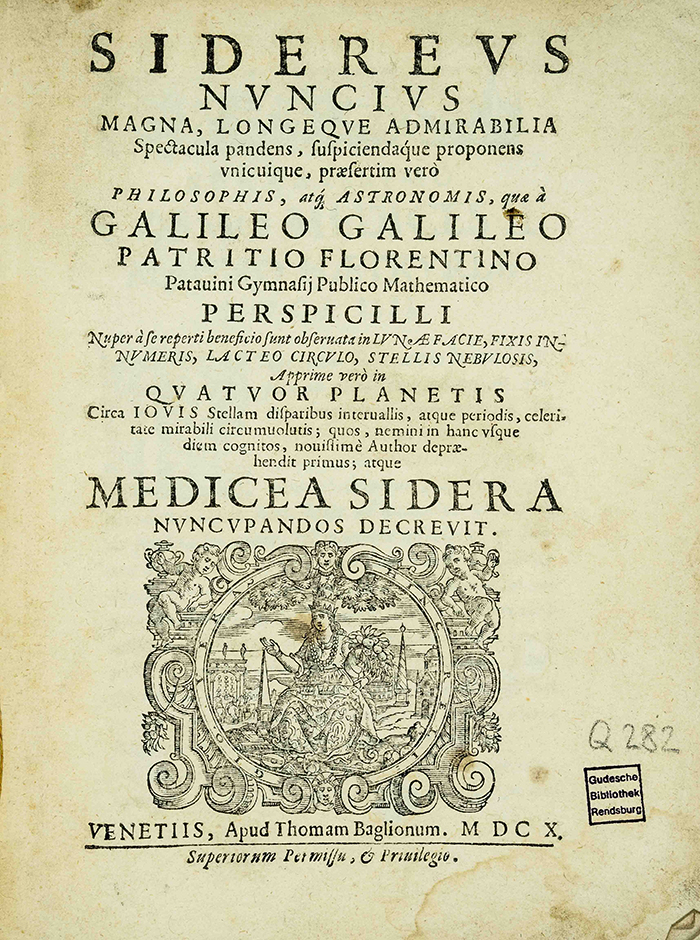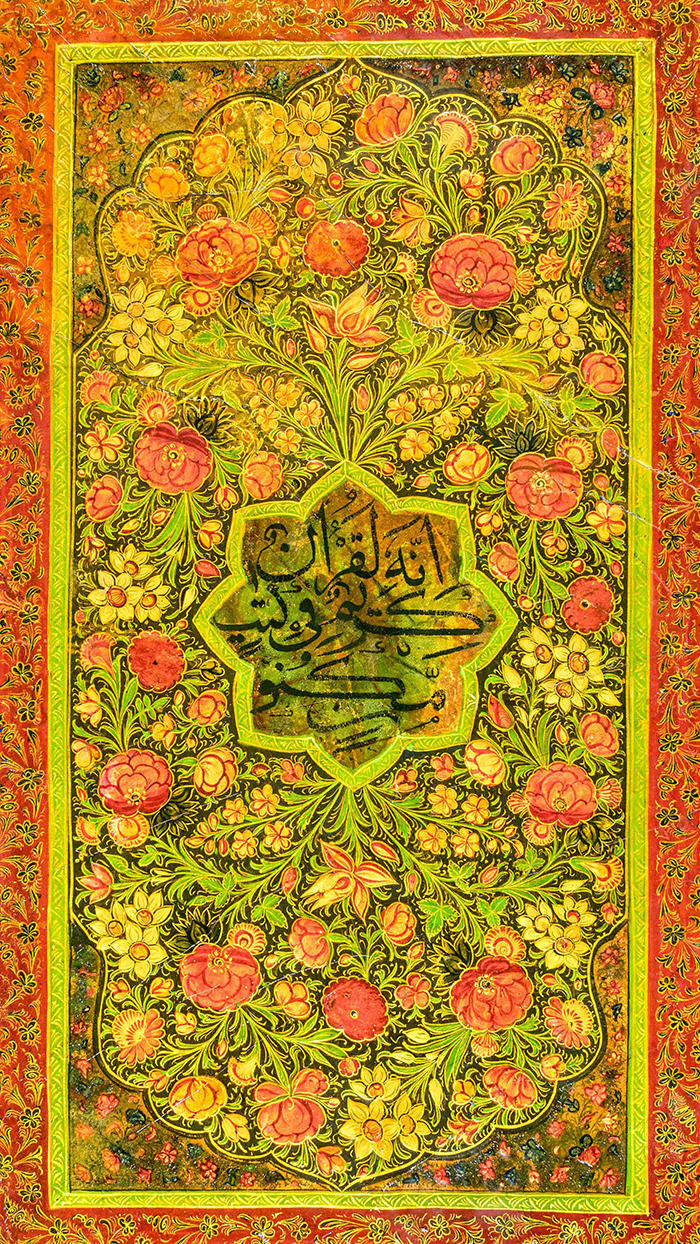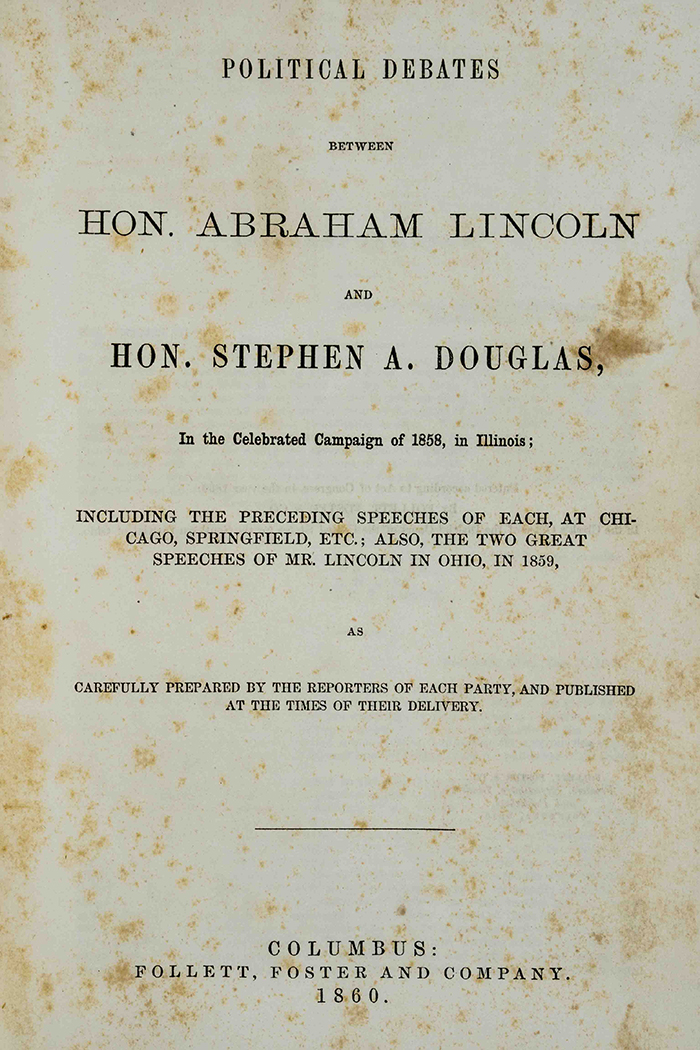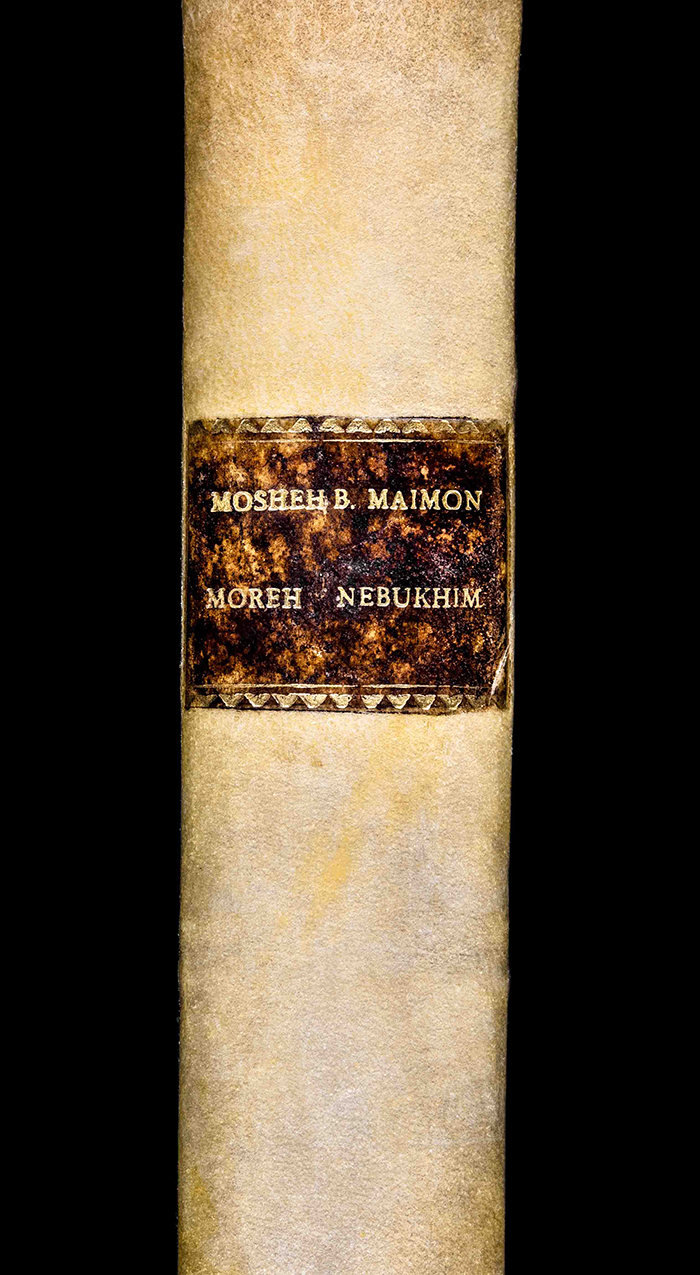Storied Books: Highlights from the Rose Rare Book Collection
Introduction
by Michelle Tedford
We’re drooling over Dalí. Gaga for Galileo. Smitten with Austen.
Now it’s your turn.
Page after page, the works included in a new exhibit opening at UD will astound bibliophiles and anchor the learning experience for first-year students.
Imprints and Impressions: Milestones in Human Progress features works from the Rose Rare Book Collection, on display Sept. 29 to Nov. 9, 2014, in the Roesch Library first floor gallery.
Salvador Dalí obviously followed Lewis Carroll down the rabbit hole while illustrating Alice in Wonderland; the colorful 1969 portfolio on display includes Dalí’s signature. Galileo’s Starry Messenger, printed in 1610, is one of only two known copies of the earliest issue of the first edition and changed how we viewed the night sky and our place in it. And it may be hard to remember your manners while peering at the original first edition boards of Jane Austen’s Pride and Prejudice.
May we offer you a napkin?
The books and manuscripts are on loan from Stuart Rose, a Dayton-area businessman who started book collecting in 1992 with a first-edition Tarzan by Edgar Rice Burroughs. Since then, he’s assembled what experts consider one of the most accomplished private rare book collections in the world. Of Rose’s more than 2,000 books, faculty chose 49 titles that both connect disciplines and transcend boundaries.
“All of the texts in this exhibit do far more than capture random thoughts; they contain whole systems of thought, testify to wonders, create worlds, offer instructions for living and invite explorations beyond themselves,” says Sandra Yocum, associate professor of religious studies, in her essay found in the exhibit catalog. “Capturing the spoken word in writing allows human expression to transcend the boundaries of space and time.”
More than 18 events around the exhibit will expand on co-curricular learning through talks, workshops and performances, with many open to the public. To view the exhibit online, click here. For more information on rare books and UD exhibits, visit the University Libraries website.
Imprints and impressions: Milestones in human progress
By Paul H. Benson
The home in which I grew up was filled with books, and, when I was young, my parents regularly read to me from them. The activity of reading captivated me then and captivates me to this day. But my great fascination with books, as uniquely interesting, meaning-laden objects, probably began when, as an unsteady toddler, I would scoot into my parents’ bedroom and begin to pull from a low bookshelf dense, heavy volumes from a set of The Great Books of the Western World, edited by Robert Maynard Hutchins and published in 1952 by Encyclopedia Britannica. These books intrigued me because my parents seemed to treat them with reverence. Their 54-volume set of The Great Books, including the curious, two-volume Syntopicon, came with its own shelf, into which the weighty volumes fit snugly. The titles of these books seemed exotic when my parents mouthed them, and the books made a wonderful thud as they fell around me to the floor.
These books were, for me, even at that tender age, gateways to worlds of challenge and adventure.
These books were, for me, even at that tender age, gateways to worlds of challenge and adventure. A number of the titles from the Rose Rare Book Collection exhibited in Imprints and Impressions were represented among Hutchins’ selections for The Great Books. Of course, my appreciation for books as a 2-year-old was rather limited. I did not know how to read. I had only the dimmest sense of the power that books can possess for individual readers and for literate communities. I did not understand how books are written, edited and produced and how varied are the production and functions of books throughout the history of print culture. I did not yet grasp how my own life and the cultural worlds I would come to inhabit are connected through time, space, meaning and value with the lives of others by way of books. As the volumes of The Great Books of the Western World dropped around me, forming a kind of literary nest in a small tract house in one of the new Eisenhower-era suburbs advancing upon cornfields to the west of Chicago, I sensed, if only obliquely, the magical character of books.
The University of Dayton is honored to exhibit this remarkable selection of volumes from the Rose Rare Book Collection in part because these books are such lovely, precious and influential artifacts.
photos by Sean Wilkinson
Encountering these rare and, in many cases, visually compelling volumes impresses upon us the unique gift of the emergence of literacy and the powerful place of the printed word in the unfolding of human cultures. In Imprints and Impressions, we are reminded of the connections between what we now think and feel, imagine and believe, say and do and the worlds that are conceived, expressed and inscribed in these books. We find in these books a dazzling array of ways in which persons and communities have sought to illuminate or give voice to their place in the world and to carry their voices forward in conversation with generations future and past. We see how differently words, images and other symbol systems can be ordered so as to seek to make sense of our lives and the worlds in which we live.
Encountering these rare and, in many cases, visually compelling volumes impresses upon us the unique gift of the emergence of literacy and the powerful place of the printed word in the unfolding of human cultures.
Consider, for instance, the dramatic contrasts in form and structure among the Scriptures in the Polyglot Bible, the theorems of Euclid, the diagrams of Johannes Kepler, the disputations of Thomas Aquinas, the drawings of William Blake, the verse of Phillis Wheatley and the narratives of J.R.R. Tolkien. As these books demonstrate the world-forming magic of the imprinted page, the uniqueness of these objects’ histories also brings to mind the multitude of books whose originals no longer exist, whose current reproductions are inadequate or incomplete, or whose origins and authors remain unknown to us. The very books that are constructed to engage in sustained conversation with future and past generations are also fragile, all-too-transient objects. The marked and bound bundles of paper that Stuart Rose has shared with us bear signs of their age, use and eventual deterioration. As we celebrate their preservation as a body of inestimably influential human endeavor, we are also made aware of how much of the printed legacy of humanity has been — and will be — lost. The time-honored declaration, “Vox audita perit, littera scripta manet” — “The spoken word passes away, while the written word remains” — is as much the expression of our hope as a fact about the durability of the printed word.
We approach this magnificent exhibition, then, partly through our particular and personal relationships with books. Taking in these texts up close unlocks rich personal stories: where we were when we first read Fyodor Dostoevsky or Flannery O’Connor; who first led us through Aristotle or Moses Maimonides; what we felt as we became consumed by the worlds of Homer, William Shakespeare, Mark Twain or Virginia Woolf. We also come to this exhibition gripped by the contrast between the historical power and persistence of these texts, on the one hand, and their ultimate impermanence, on the other. These books present us with human strivings to speak beyond the bounds of our specific time and place, even as they mark the limits and improbabilities of those very efforts.
These books present us with human strivings to speak beyond the bounds of our specific time and place, even as they mark the limits and improbabilities of those very efforts.
As an educator, however, what impresses me most about the opportunity to experience these books together, on the University of Dayton campus, is the capability of these volumes to create shared spaces for exploration, imagination, creation and discovery, both here and now and stretched across time. Some of these volumes speak directly to one another. Some can be placed in conversation with each other through our readings of them. All of these volumes can draw us, as active communities of readers, into dialogue with and about them. These books give rise to dialogical spaces within which new questions, emotions, hypotheses, dreams, arguments, relationships and ways of being human become possible for us and worthy of our contemplation.
The University of Dayton’s new Common Academic Program for undergraduates, now entering its second year, embraces the invitations of books such as these. Unlike most general education curricula, the Common Academic Program is not oriented primarily toward sprinkling small portions of students’ time and attention across the breadth of core, disciplinary ways of human knowing (a little humanities here, a little science and social science there, and so on). Rather, our new curriculum seeks to engage the entire University community in the project of advancing shared goals for student learning: the production of bodies of scholarly work; the development of intelligent, mutually enriching dialogue among faith traditions; the cultivation of intercultural competencies; the building of communities that nourish service, justice and peace; the growth of practical wisdom in response to real human problems and needs; the informed and critical evaluation of the times in which we live; and the discernment of our individual and communal callings. As we take the opportunity, then, to immerse ourselves in some of these texts and their complex, intersecting histories and patterns of influence, we enter not only a shared space for dialogue and reflective examination, but also a curricular commons that is structured to foster integrative learning in the context of the University of Dayton’s distinctive Marianist educational traditions.
We enter not only a shared space for dialogue and reflective examination, but also a curricular commons that is structured to foster integrative learning in the context of the University of Dayton’s distinctive Marianist educational traditions.
In these books, we encounter multiple, profound ways of articulating what it means to be human, new ways of understanding our faith commitments in relation to others’ traditions, and deeper methods for recognizing what it is ethically good or right for us to do. These books also strengthen our awareness of the differences between ways in which various academic cultures — the traditions of conceptualization, reasoning, theory and creative practice that we call “disciplines” — frame and respond to humanity’s deepest questions. Ultimately, our engagements with volumes in the Imprints and Impressions exhibit challenge us to consider how we might strive for greater wholeness in our pursuit of knowledge and integrity in our decisions about how to lead our lives. They challenge us to integrate our learning, our actions and the broader, overlapping communities that shape who we are. The disciplinary perspectives found in the exhibition speak to our drive to integrate our thoughts, sentiments and decisions and to live with whole hearts and whole minds — in short, our aim to compose meaningful lives and apprehend an intelligible universe out of the fragmentary character of our experience. Perhaps books such as these can help us to do just that.
Paul H. Benson is interim provost and former dean of the College of Arts and Sciences. His essay appears in the Imprints and Impressions catalog for the exhibit opening Sept. 29. 2014.
